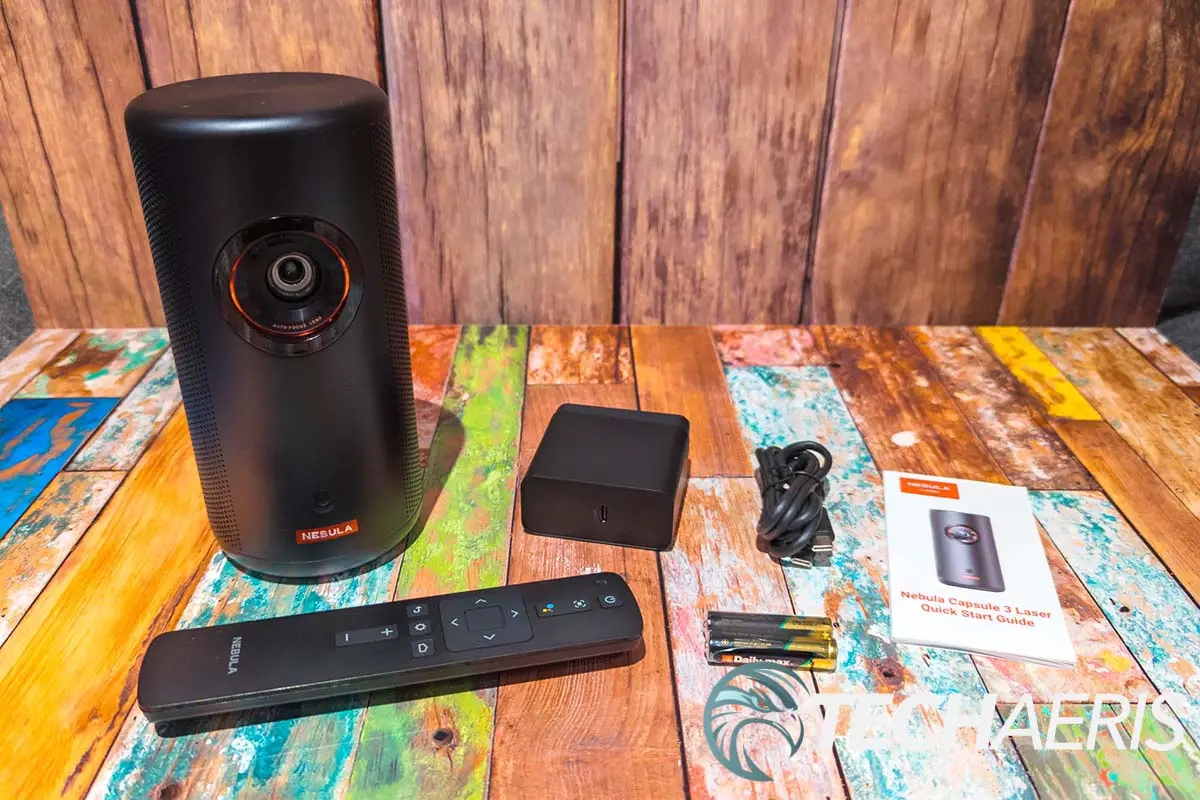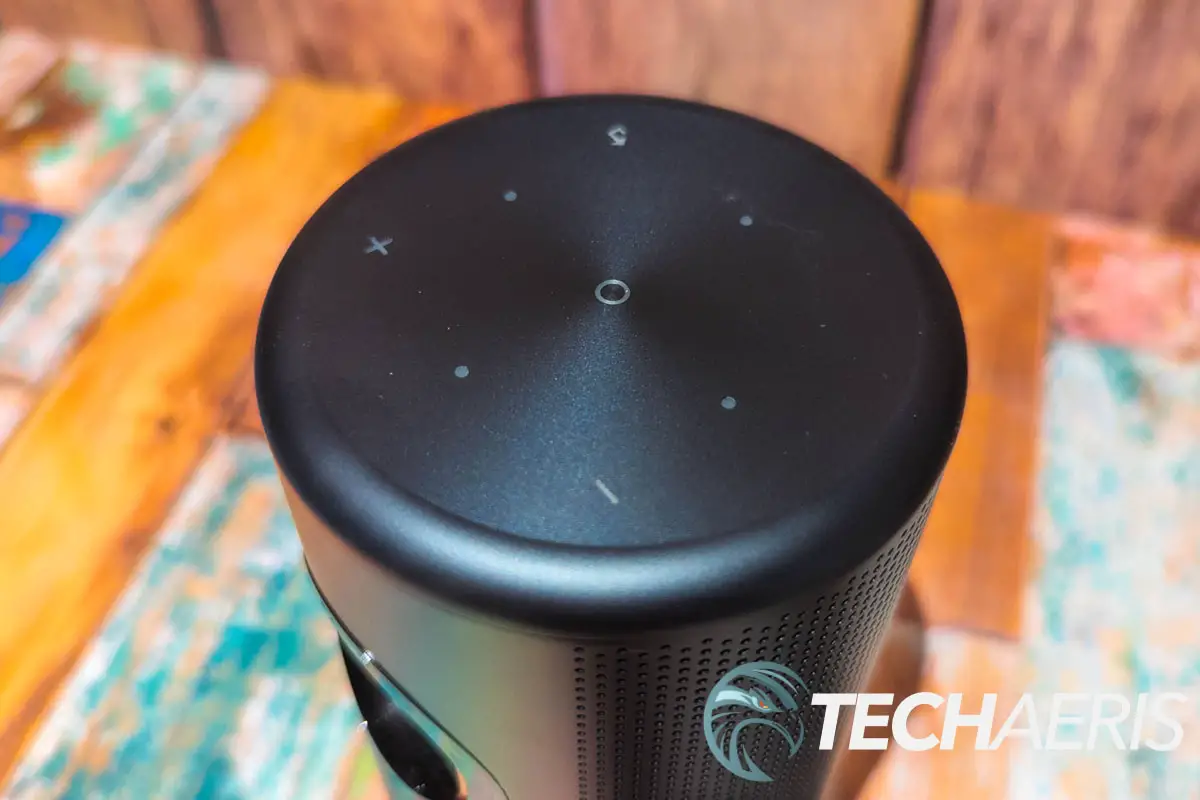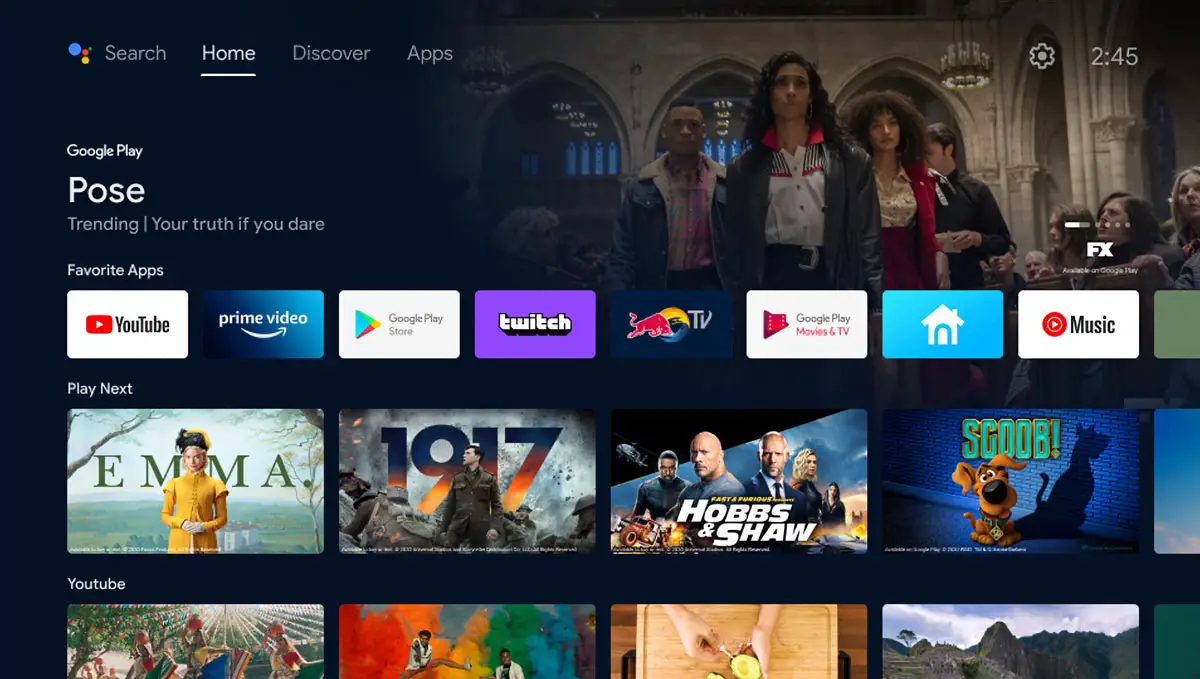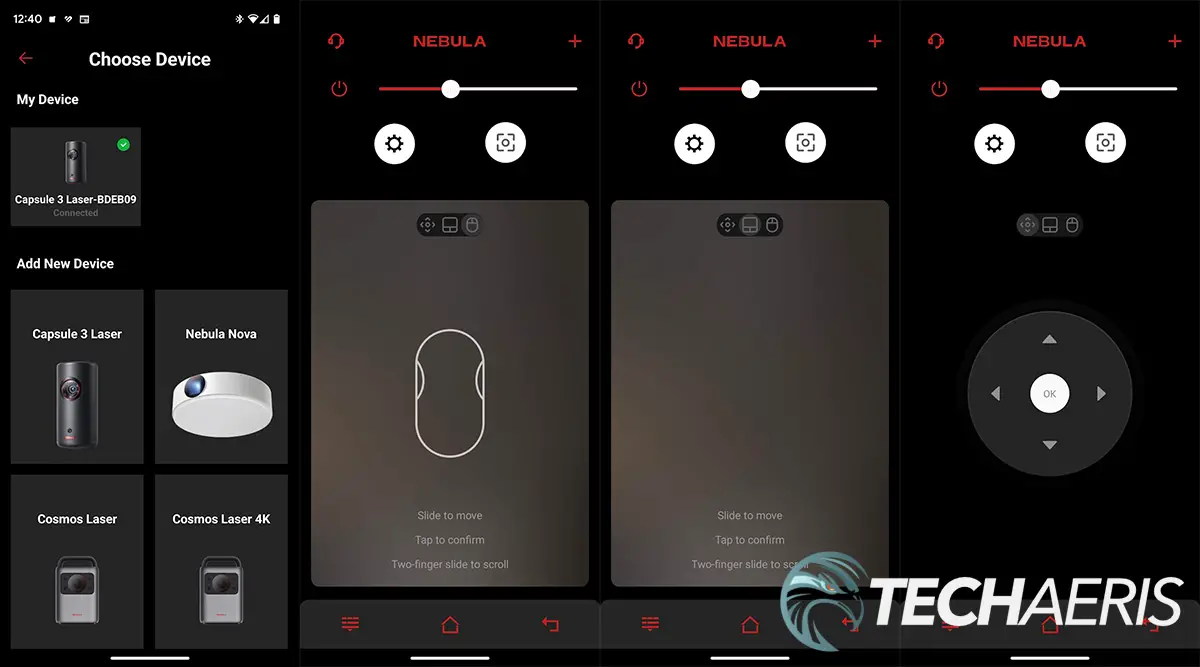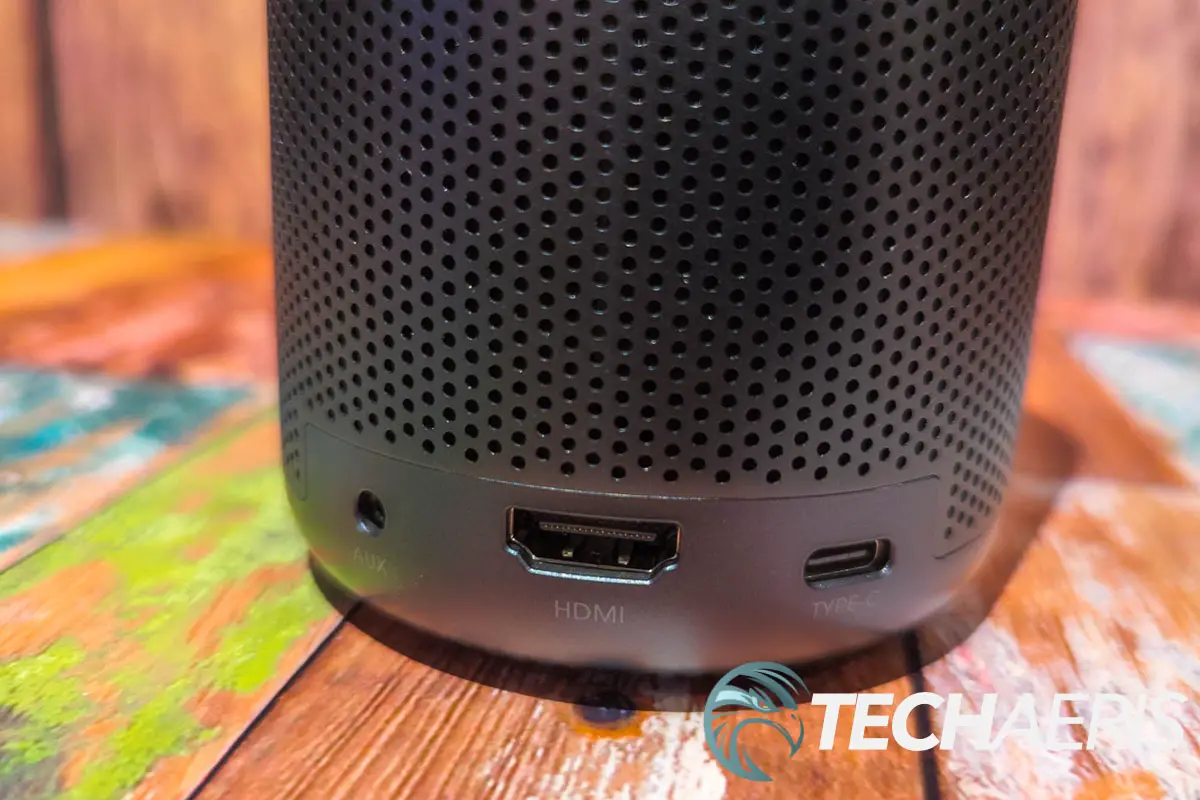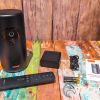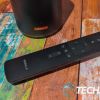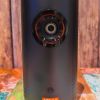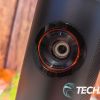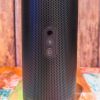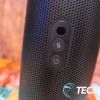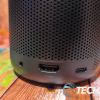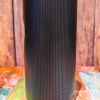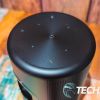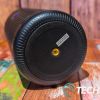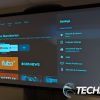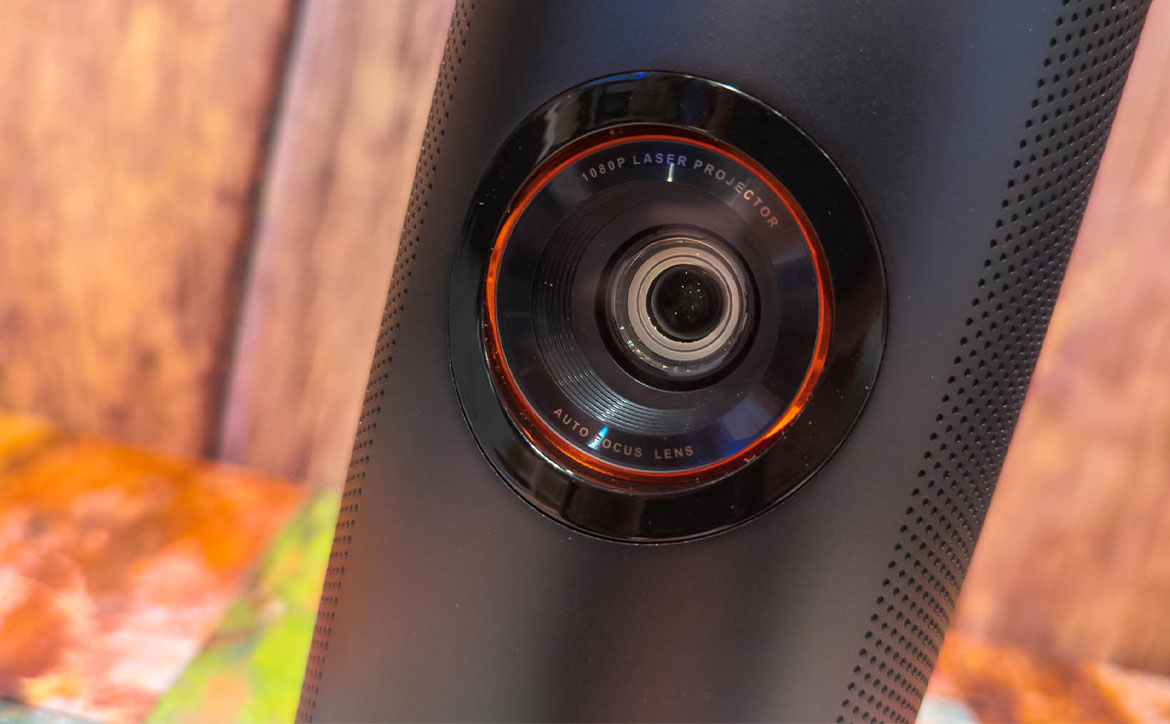
With each new iteration, small portable projectors get a little bit better. One area where they typically fall short though is in brightness. Some of the latest portable projectors have made the leap to a laser lens system which is not only brighter but also has a longer lifespan.
Estimated reading time: 15 minutes
Our Nebula Capsule 3 Laser review looks at a small, portable, laser projector with Android TV, a built-in battery, and speakers for movie watching in non-traditional places. Read on for our full review.
Table of contents
The Quick Take
There are plenty of portable projectors on the market these days. The Nebula Capsule 3 Laser offers up a fairly bright 1080p FHD picture given the right conditions with decent sound. With Android TV 11 onboard, you can easily content from streaming services, with the exception of Netflix which requires a workaround that doesn’t offer the best experience. It also suffers from minor performance issues when turning it on or navigating the interface, sometimes working just fine, other times a bit slow and sluggish.
Aside from that, the Nebula Capsule 3 Laser also doubles as a Bluetooth speaker and has enough battery life to watch most movies on a single charge. In addition, the use of a laser lens increases the lifespan of the lens, with Anker claiming up to 30,000 hours before the bulb burns out. Put another way, the lens on the projector should last over 10 years if you had it on for 8 hours a day.
Unfortunately, portability isn’t exactly cheap. While not the most expensive portable projector on the market, it’s also not the cheapest.
Specifications
The Nebula Capsule 3 Laser we reviewed has the following features and specifications:
- Laser-Bright 300 ANSI Lumens | 1080p Laser HD Clarity
- Only 2.1lb (950 g) | 90% Smaller Than Similar Projectors
- 52Wh Built-In Battery | Play Videos for 2.5 Hours
- Watch or Play with Android TV 11.0 | Compatible with Netflix
- Hi-Fi Cinematic Sound | 8W Dolby Digital Speaker
| Model | • D2426 |
| Hardware | • CPU: Quad-Core ARM Cortex-A55 CPU • GPU: G52MP2 • RAM: 2GB DDR • ROM: 16 GB eMMC |
| Display | • Display Technology: DLP 0.23 DMD • Resolution: 1920×1080 • Brightness: 300 ANSI Lumens • Light Source Life: 30,000H • Aspect Ratio: 16:9 • Throw Ratio: 1.2 • Offset: 100% • Focus Adjustment: Auto Projection • Projection Mode: Front / Rear / Front Ceiling / Rear Ceiling • Keystone Correction: Auto (vertical ±40°), Auto (horizontal ±40°) • MEMC: Yes |
| Control | • Physical Buttons: Power/Volume/D-Pad Mode/Mode Switch/Back • BT Remote App: Android and iOS |
| Software | • OS: Android TV 11.0 • Working Modes: Projector Mode, Bluetooth Speaker Mode • OTA: Supported • App Store: Supported • Control App: Nebula Connect |
| Movie Playtime | • 2.5H in Battery Mode |
| Music Playtime | • 10H in Bluetooth Speaker Mode |
| Wi-Fi | • 802.11a/b/g/n/ac, Dual Frequency 2.4/5GHz |
| Interface ports | • HDMI 2.1/USB-C/AUX-OUT |
| Speaker | • 8W |
| Battery | • 52Wh |
| Charging Time | • 3H with Quick Charge 2.0 20V/2.25A |
| Color | • Black |
| Dimensions | • 6.7 x 3.3 x 3.3″ (170 x 83 x 83mm) |
| Weight | • 2.1lb (0.95kg) |
| NOTES | Copyrighted content from Hulu, Netflix, and similar services CANNOT be mirrored or screencast. Download and use apps directly through Capsule to view copyrighted content from these providers. |
What’s in the box
- Anker Nebula Capsule 3 Laser
- USB-C Power Adapter
- USB-C Cable
- Remote
- 2x AAA Batteries
- Quick Start Guide
Design
At 3.3″ in diameter and 6.7″ in height, the Anker Nebula Capsule 3 Laser portable projector is a bit wider across than a pop can and about 1/3 taller. In other words, it is pretty compact when it comes to projectors. Matte black in colour, the sides and back of the speaker have tiny holes drilled into them, giving it a speaker-like look.
On the front of the portable projector, which is smooth plastic instead of the dimpled finish like the rest of the projector, is where you’ll find the housing for the autofocus laser lens, which is roughly 1 1/2″ in diameter. The housing is clear with a shiny red ring and a larger glossy black ring around it. Below this, near the bottom, is a smaller camera for the auto-focus and auto-keystone features. The Nebula logo is embossed in silver near the bottom, sitting on top of a red rectangular shape. The minor red and glossy black touches on the front of the projector add just a small touch of class to the look.
The back of the projector is where you’ll find the IR sensor, Bluetooth button, and power button, located centered vertically. At the bottom of the Nebula Capsule 3 Laser are the ports for AUX and HDMI input, as well as a Type-C port for charging and streaming for a USB drive.
The controls for the cylindrical projector are on the top. These are indicated by four dots for navigation, a circle in the center that acts as an OK/enter button, a + symbol to increase volume, a – symbol to decrease volume, and a back arrow. Finally, the bottom of the projector has a rubber lip for grip when sitting on a table or desk, as well as a 1/4″ hole for mounting on a tripod.
The Nebula Capsule 3 Laser also ships with a remote control. Almost as tall as the projector, it’s 6 1/4″ in length, 1/2″ thick, and 1 1/2″ wide. The remote is pretty simple with a power button on the top and a longer vertical button for keystone correction and Google Assistant below that. Under that button is a directional button pad with a center button. Three smaller buttons for back, settings and home sit in the middle of the controller while a vertical volume up/down button is below that. The Nebula logo is printed on the remote control near the bottom. On the back of the remote is a removable tray for the included AAA batteries.
Overall, the Nebula Capsule 3 Laser looks pretty decent with its compact cylindrical shape.
Setup/Ease of Use
Setting up the Nebula Capsule 3 Laser isn’t overly difficult. In fact, the projector walks you through most of it.
- Press and hold the power button on the projector for 2 seconds
- Select your language
- Use Quick Setup to transfer your Wi-Fi and Google account settings from your Android device to the projector
- Open the Google app on your phone, say “OK Google, set up my device”
- Tap Next on your phone; it should detect the Nebula Capsule 3 Laser and display a code
- If the code matches the one on your screen from the projector, tap next
- Choose your Wi-Fi network on your smartphone
- Choose to copy your Google Account(s) to the projector
- Choose which Google Account if you have multiple
- Confirm your password on your smartphone
- Complete setup on the Nebula Capsule 3 Laser
- Accept Network Privacy Policy
- Accept Google’s Terms of Service
- Allow (or disallow) Google from accessing your location
- Help (or choose no) to improve Android
- Set up Google Assistant voice control
- Enable/disable personal results
- Choose which additional apps to install like Disney+, Spotify, Plex, etc.
- AndroidTV interface launches, install Nebula Capsule 3 Laser system update (if applicable)
- You will get a warning saying that this device isn’t optimized for Netflix (more on that later)
Once you’ve done the above, you should be good to go and you can use the remote control, top controls, or Nebula Connect app to pretty easily navigate and control the projector.
Display
With each iteration of the Nebula Capsule portable projector, Anker has improved the display quality. The original had a 480p 100 ANSI Lumen lens, while the Nebula Capsule II increased that to a 720p 200 ANSI Lumen lens. The latest, the Nebula Capsule 3 laser takes this up a notch by not only increasing the resolution to native 1080p at 300 ANSI Lumen brightness but by also using a laser lens instead.
Like most other projectors of this size and price, you’ll need to either have the projector close to the wall or in a darkened room to be able to see the image. The projector also accepts 2K and 4K sources via HDMI, resulting in a slightly crisper 1080p image when downscaled. Of course, the closer you are to a wall, the smaller, crisper, and brighter the picture. In a darkened room, like my basement, the projector was adequate when projected on a 106″ screen, albeit a bit on the dark side.
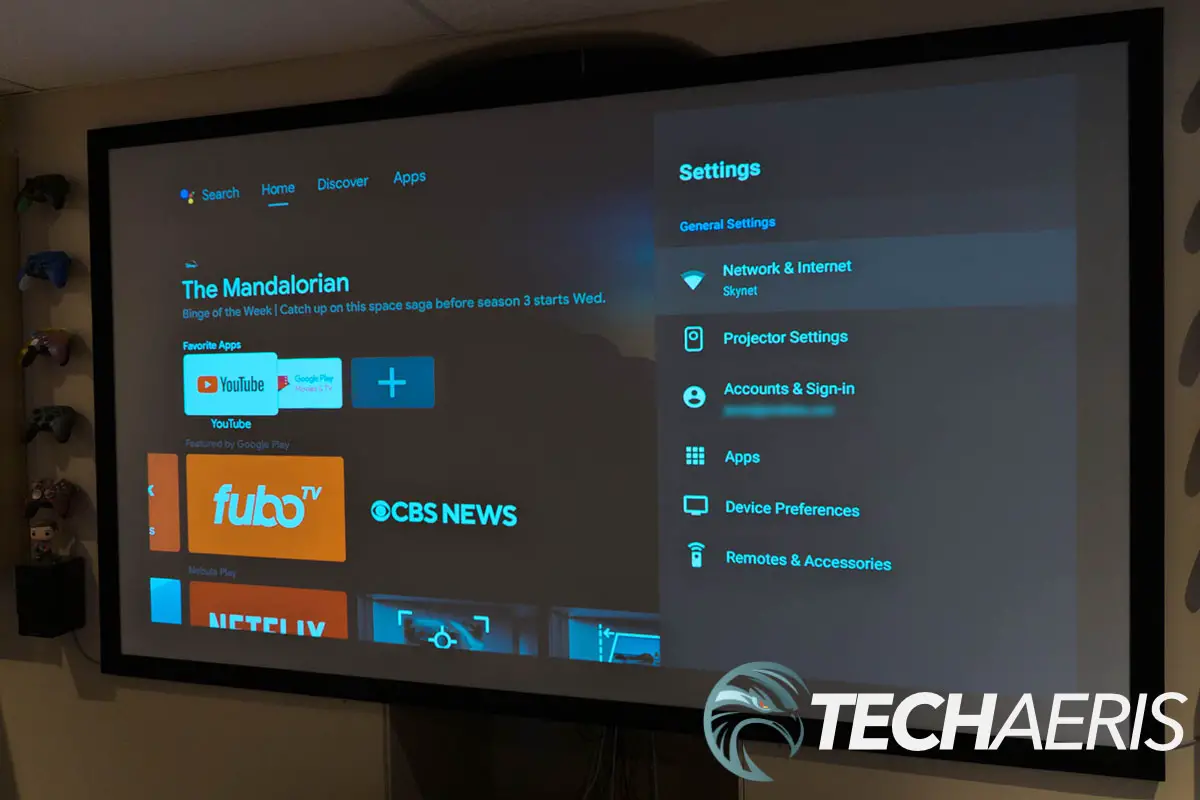
The colours were decent, however, as was the crispness of the image on the screen. There are several settings you can adjust to suit your environment to try and get a better picture. These include Standard or Movie presets. You can also adjust the brightness between Auto, Standard, or Battery presets or manually. You can access the Picture Custom setting and manually adjust contrast, saturation, sharpness, color temperature, wall colour, and gamma. There are also expert settings you can play with like DNR (Dynamic Noise Reduction), MPEG NR, DI Film Mode, and MEMC.
The Nebula Capsule 3 Laser also has auto-focus and auto-keystone correction capabilities. As detailed below in the performance section, the auto-focus and auto-keystone were hit-and-miss, working flawlessly sometimes but requiring manual adjustment at others.
For a small, portable projector, I was pretty pleased with the display quality.
Software
Android TV
Running Android TV 11 out of the box, the Nebula Capsule 3 Laser has a pretty decent interface that is easy to navigate.
When powered up, the Home page displays new content from your installed streaming services. Across the top are options for Search, Home, Discover, and Apps. On the upper right are icons for Source, Battery, Settings, and the current Time. The settings section lets you configure your network, account, apps, projector settings, device settings, and pair remotes and other accessories like an external Bluetooth speaker.
As for apps, you can install almost any app that’s available in the Google Play Store. Almost. While Disney+, Plex, Prime Video, Spotify, and most others work just fine, the native Netflix app does not work as the device is unsupported. There is a workaround, however, which I’ll discuss below.
At the time this review was posted, the device was updated to the February 1, 2023 Android security patch as well, which was nice to see as these types of devices usually lag behind on that front. That being said, it is a newer projector so time will tell how long they keep up with security patches.
Nebula Connect
Depending on what you plan on using this portable projector for, you may need to install the Nebula Connect app on your mobile device. The main instance allows you to more easily navigate Netflix. Once installed, you can pair and connect to the Nebula Capsule 3 Laser via Bluetooth. Unfortunately, I had to reconnect a few times and re-pair it on occasion. Once connected though, you can use the app to navigate using a standard arrow/OK button, via a touchpad on your mobile device screen, or like a mouse (which is needed for Netflix navigation which I’ll touch on in a minute).
The app also allows you to easily access the projector settings, activate the auto-focus/auto-keystone, send text to the projector (like when in a search menu), adjust the volume, or power the projector off.
Netflix
I know not everyone uses or cares for Netflix. But a large percentage of the population does and unfortunately, the Nebula Capsule 3 Laser doesn’t natively support it. Fortunately, Nebula has a quick video on how to install Netflix on the Capsule 3 Laser:
Unfortunately, while Netflix was relatively easy to install, it doesn’t work the greatest with the Nebula Connect app and you’re relegated to the mobile version of the app. Navigating requires a bit of patience as it appears to be a web version. This means that a cursor appears on the screen and you have to use the direction pad to move it around and select what you want to watch. That being said, once the movie or show started to load, I didn’t have any issues with watching Netflix in this way. You can also install other apps like Aptoid TV as well, giving you access to even more Android apps.
Performance
The performance of the Nebula Capsule 3 Laser, unfortunately, is a bit hit-and-miss. When powered off and pressing the power button on the projector or remote, it takes just over 30 seconds to fire up into the Android TV interface. After that, it takes about another 30 seconds before using the remote control is responsive and there isn’t a delay when navigating or accessing content.
Once it’s fired up and you’ve waited a couple of minutes, however, navigating with the remote control is as responsive as one would expect and I only encountered the odd delay. Depending on your Wi-Fi, streaming from apps like YouTube, Disney+, Crave, and Apple TV was on par with other devices I use for streaming. Using an external HDMI source worked fine as well as streaming a file from a USB stick.
While a great feature, the auto-focus and auto-keystone features were another hit-and-miss. There were times when it would focus perfectly the first time, others I would have to press the focus button two or three times — even when projecting the picture on my fixed projector screen. The same went for the auto-keystone. More often than not, I’d get a relatively rectangular picture but the odd time I’d have to go into the manual settings and adjust the corners. Another issue was that when moving the projector, the auto-focus and auto-keystone wouldn’t kick in and I’d have to press the button on the remote. There is an option to reset Keystone Calibration and once I did that it seemed a bit better, but still not 100%.
Sound Quality
Like display quality, Anker has improved on the speaker output from the first Nebula Capsule, which featured 5W speakers, to the 8W speaker in the Capsule 3 Laser. The 8W speaker does get really loud, and only distorts a little at higher volumes. At medium volume, you can easily hear the speaker on an entire floor of the house. I found that about 1/3 volume was perfect when using the projector in a room to watch videos or listen to music. There is a surprising amount of bass which is more on the warm side as opposed to punchy, and it is pretty balanced.
There are also some sound settings you can adjust, including setting the projector to Movie, Music, Outdoors, or Custom preset modes. You can also access expert settings which allow you to toggle Digital Output, set up eARC, set the Downmix Mode to Surround or Stereo, toggle Auto Volume Control, and even adjust speaker delay if the audio is a bit delayed from your source.
My one (minor) complaint is that there is only one 8W speaker and it’s on the right side of the speaker when looking at it from behind. In other words, if you’re in the middle you can hear a slight leaning to the right of your audio. If you’re on the right you can really hear it in your left ear but if you’re on the left side then it does fade a bit. It’s pretty minor, and my kids didn’t notice it until I pointed it out but it is worth mentioning.
Battery Life
With a 52Wh battery, Anker states that the Nebula Capsule 3 Laser will last up to 2.5 hours while watching a video or up to 10 hours of music listening as a speaker. During testing, we hit between 2-2.5 hours consistently using the default settings when watching streaming video. Of course, the battery life here is impacted by the brightness you have the projector set at. As for music, the speaker lasted just over 8 hours at about 50% volume.
Once depleted, it does take about 3 hours to fully recharge if you have a Quick Charge 2.0 adapter (20V/2.25A). If not, it will take a bit longer.
Price/Value
With an MSRP of $799.99, the Nebula Capsule 3 Laser is pricey, especially compared to some other 1080p options currently available on, and coming soon to, the market. The price jump is due, in part, to the laser lens which gives the projector a longer lifespan. Unfortunately, it’s a bit tough to recommend due to the minor performance issues compared to other available options but, hopefully, these can be sorted out by way of firmware updates down the road.
Photo Gallery
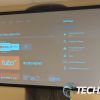
Wrap-up
While a decent portable projector, the Anker Nebula Capsule 3 Laser is a bit of a mixed bag. It does offer excellent 1080p picture quality with its laser lens, as well as solid sound. However, it is pricier than other FHD options and it doesn’t offer the best Netflix experience. That being said, if you don’t care for Netflix, are patient for the occasional time it has slightly sluggish performance, and don’t plan on relying on the auto-focus and auto-keystone, the Nebula Capsule 3 Laser does offer up a pretty decent picture and sound if you’re in a dark enough location when using it.
In some of our articles and especially in our reviews, you will find Amazon or other affiliate links. As Amazon Associates, we earn from qualifying purchases. Any other purchases you make through these links often result in a small amount being earned for the site and/or our writers. Techaeris often covers brand press releases. Doing this does not constitute an endorsement of any product or service by Techaeris. We provide the press release information for our audience to be informed and make their own decision on a purchase or not. Only our reviews are an endorsement or lack thereof. For more information, you can read our full disclaimer.
Last Updated on March 13, 2024.

